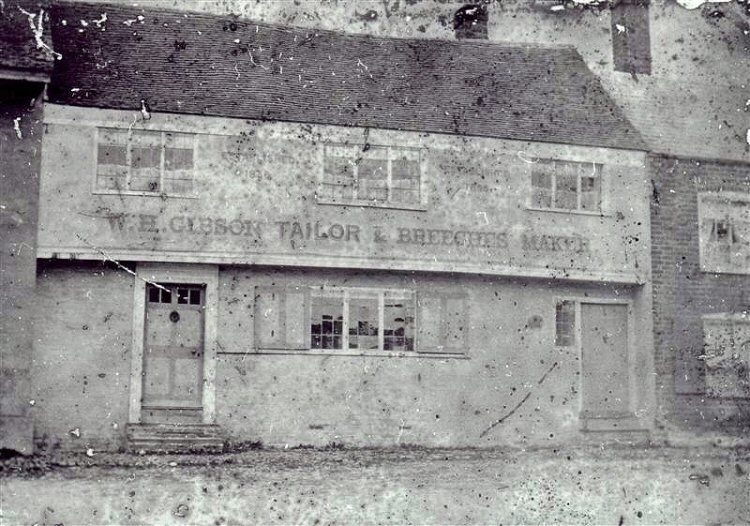
Verneys, Elham
Peter Verney remembers WW2 here

William Hobday Gibson was the tailor in the latter half of the 1800s and this picture came from a peeling glass plate.
The 1881 Census shows:
Dwelling: High St
William H. GIBSON M 49 M Lyminge, Rel: Head Occ: Tailor Employing 2 Men
Ann GIBSON M 55 F Elvington, Gloucester, Rel: Wife
George H. STEVENS U 20 M Wingham, Rel: Apprentice Occ: Tailors Apprentice
William BURNSSELL U 17 M Standford, Rel: Apprentice Occ: Tailors Apprentice
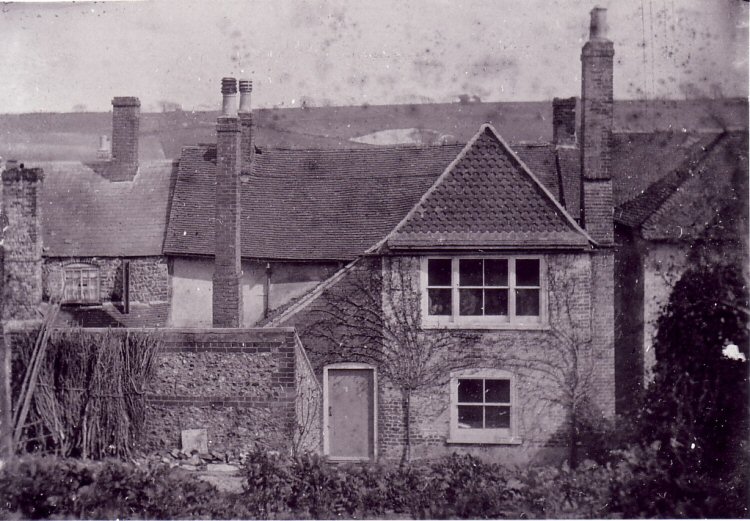
Rear view of the house which was
taken at the same time as the above view.
What is of interest is how little trees and bushes are apparent round the chalk
pit.
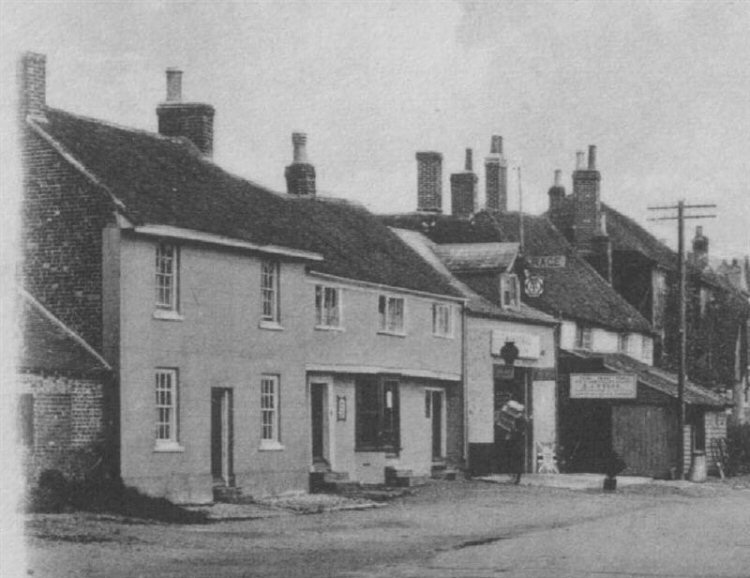
Photograph possibly taken when Albert Castle took over the business around the end of the century, and shows the first garage alongside the original village forge.
The photographs and information on this page were provided by Peter Verney when he visited Elham in 2007.
Peter Verney recalls... " my connection with the Hunt is via my father, his father was employed by the Lowndes family at Whaddon in north Bucks. They owned the famous Whaddon Chase Hunt and about 1900 one of the wilder sons, Selby Lowndes, acquired the run down East Kent Hunt and built it up at Elham. He brought some of the family servants with him from Bucks, including my grandfather with his wife and 4 children, with Jack, number 5 being born in Elham.
My grandfather was killed in a riding accident on Hunt duty in 1905 and is buried in Elham churchyard described as 2cd whip. A sixth child was on the way at the time but she died aged 3 months. The Hunt looked after the family, social security was pretty bleak in those days, and the children were either employed by them or found places. My father was apprenticed to Albert Castle, the village tailor at the age of 13 or 14 in 1910, served in the Army 1916-20, returned to the shop, then served in the RAF 1940-45. Albert Castle died in 1944 and my father bought the shop from his widow and we moved down there from Briar Bank. My father restarted the defunct tailoring business in 1945 and kept going into the early '70's, and styled himself Tailor to the East Kent Hunt, having persuaded Selby Lowndes to give Mr Castle work many years before. He made the Hunt staff a new set of clothes each year, and became one of the last tailors in the country capable of setting out , cutting and making up a ladies sidesaddle skirt ".
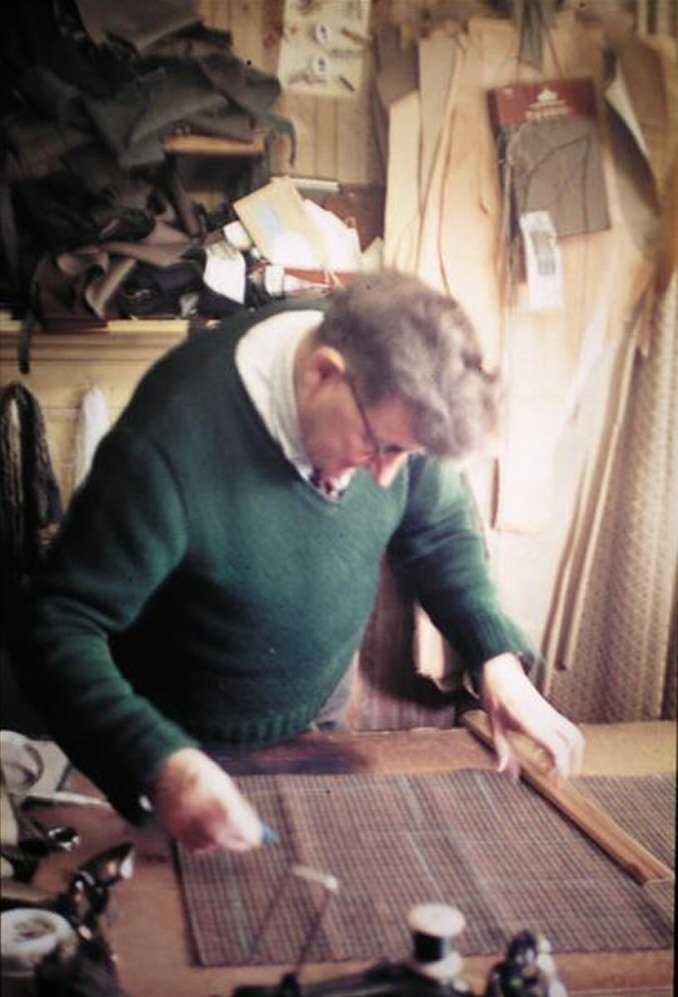
Frank Verney working in the shop, marking out a piece of cloth preparing to make a jacket.
Verneys today
Peter Verney Remembers his families Military Service and Elham in WW2.
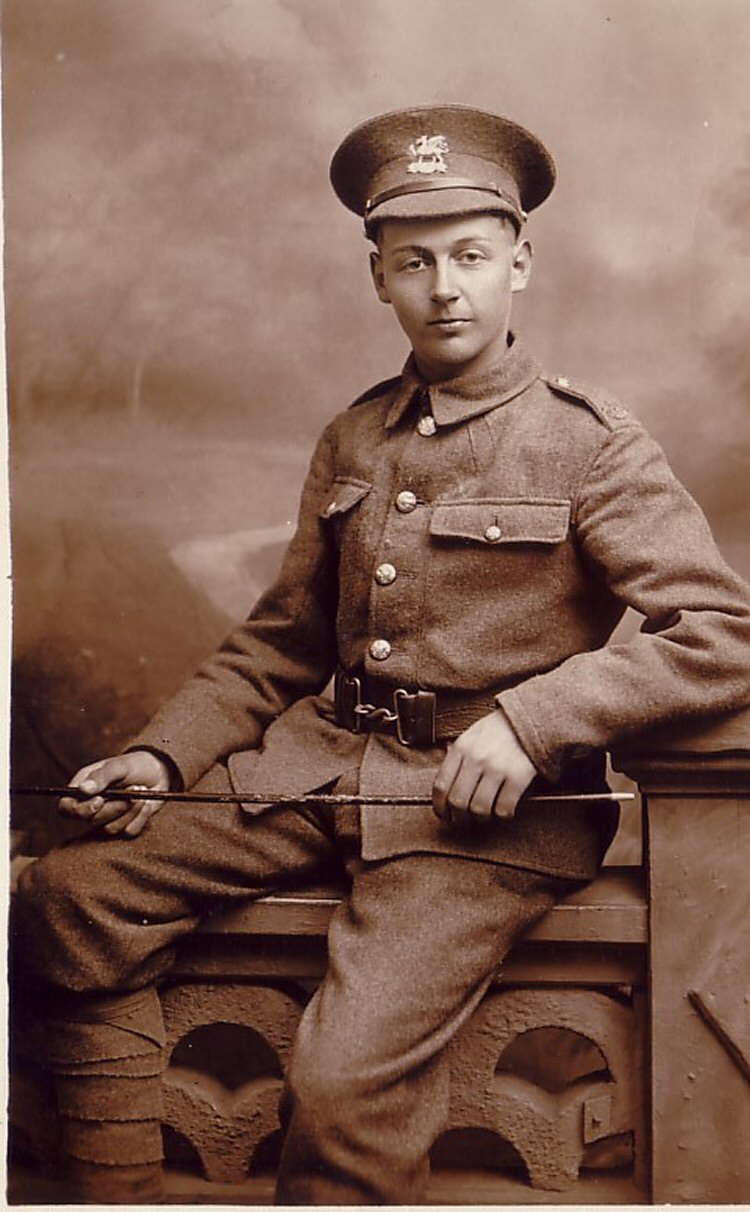
Frank Verney was in the army serving in Mesopotamia during WW1.
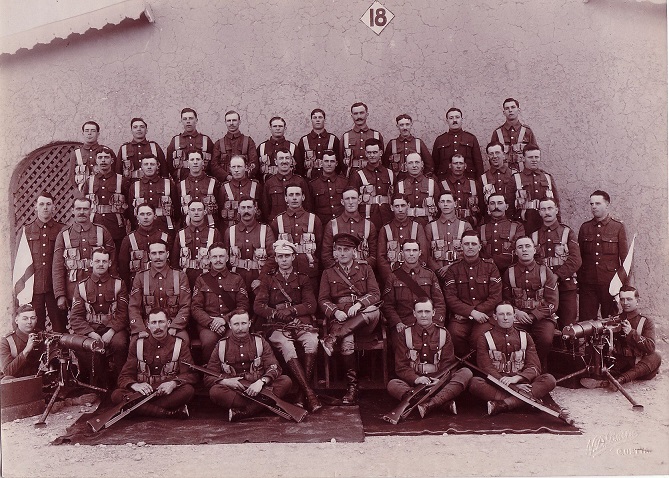
Frank is sitting behind his machine gun at the extreme left.
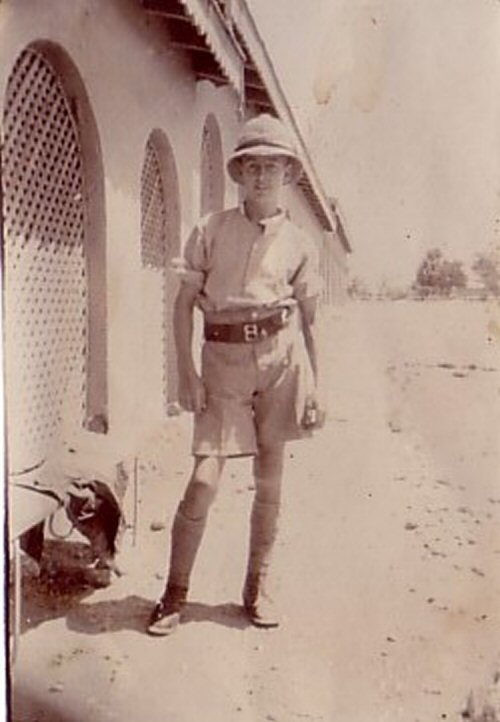
Frank out in India or Iraq
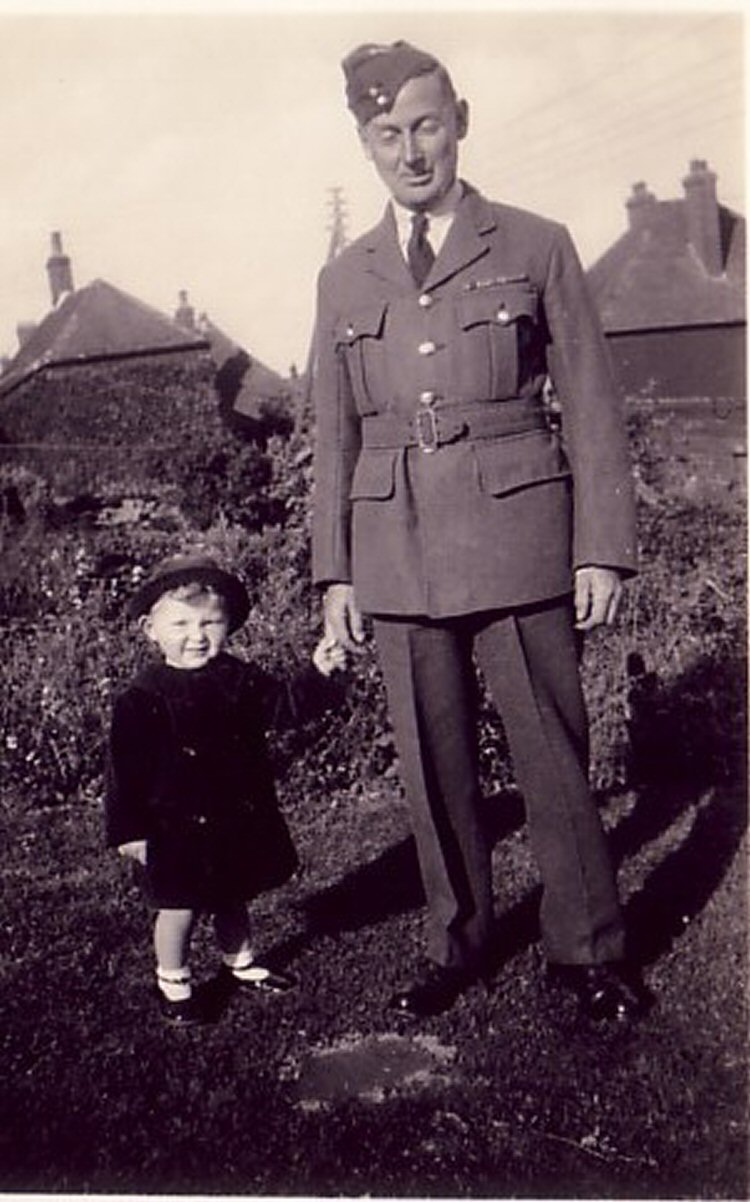
Frank Verney joined the RAF in 1940, he is seen here holding Peter's youngest brother Paul's hand.
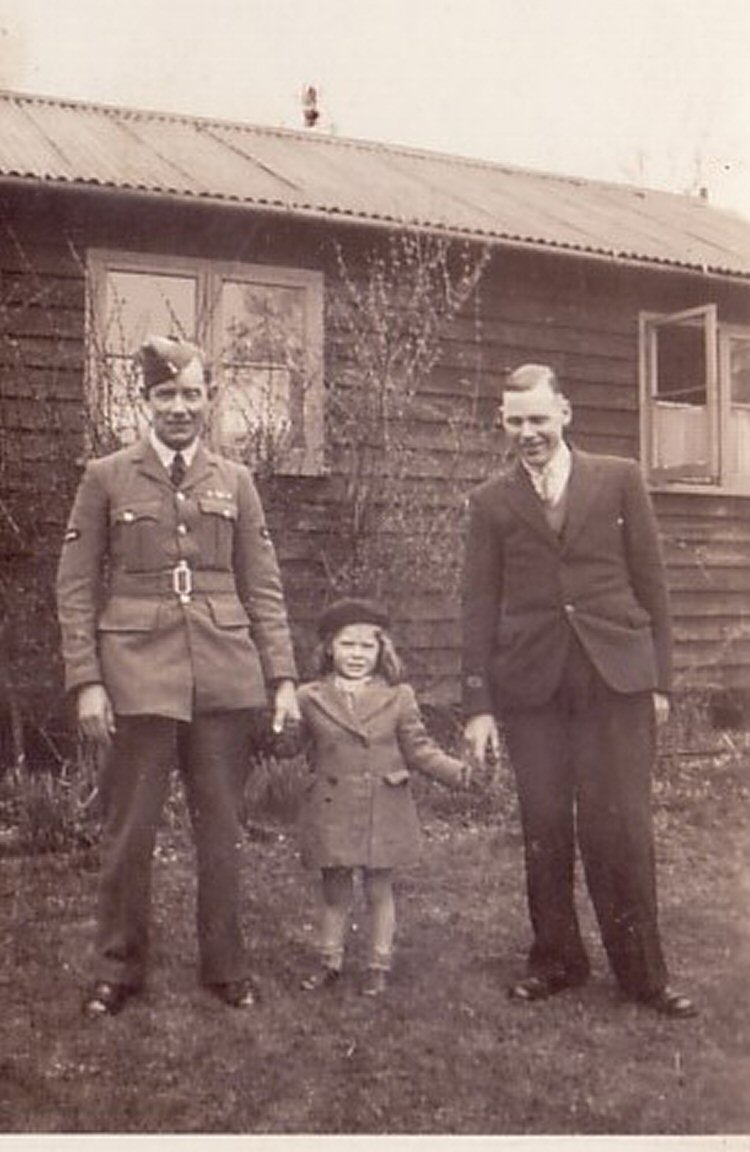
Peter's uncle Edgar Verney when he was on leave prior to going to Malta, he is with Jack and Peter's cousin Ann.
Sadly Edgar Verney was killed during the siege of Malta and he is mentioned on Elham War Memorial.
VerneyAug1944_web.jpg)
Peter's uncle Jack Verney when he was in the RAF dated Aug 1944
Elham in WW2
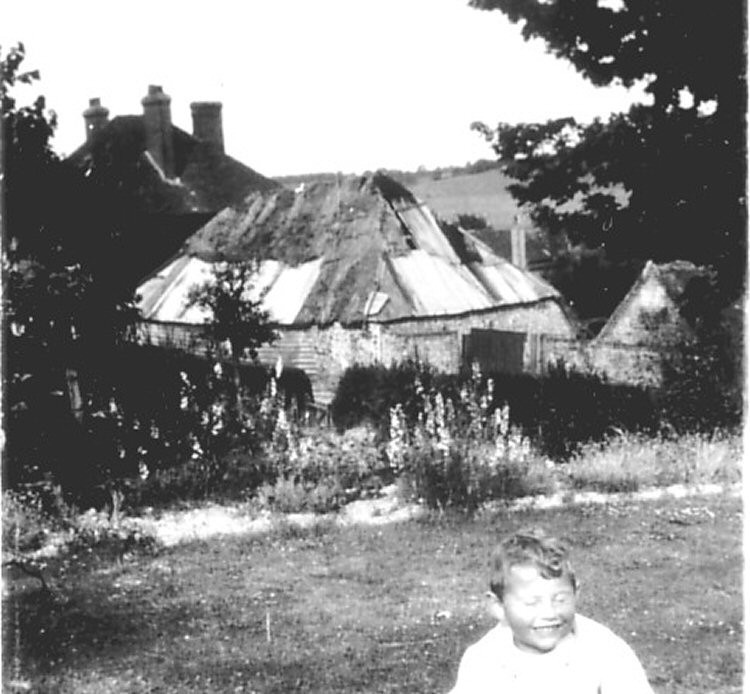
Peter Verney in the front garden of his home
Briar Bank, Elham.
The barn in the rear of this photo is that actual location of the Messerschmitt
Dump where crashed enemy planes were brought for examination.
Occupied Houses in Elham:
The cottages against the
Churchyard wall (now demolished), in the square were used by the army.
The Limes was used as the Officer's Mess for Artillery.
Nissan huts built on Hog Green for the Royal Artillery who manned the 12 inch
railway guns.
There was also another house opposite the green used by the army.
These were later left empty during the war.
A house was on the site of were Calmpton now stands this was referred to as the Bug House. This was not occupied by the troops and always remained empty.
During the Battle of Britain:
I remember that we were advised to stay when the Germans invaded, otherwise the roads would be grid locked. We were also advised to put sugar in the petrol tanks of vehicles to immobilise them.
There was a strafe attack by German plane on an engine parked under Lickpot bridge. Shells for the long range guns had been stacked on the platform of Elham Station, covered in a tarpaulin. The plane strafed the engine hitting Lick Pot bridge, almost cutting down a telegraph pole close to the stationmasters house and setting the tarpaulin on the platform alight.
In one incident during the B o B 4 aircraft came down around Acrise and Lyminge. A Polish and a German pilot were taken to the Elham Doctor at Aycklye House, had to wait as the doctor was out attending to another pilot. They sat on the wall on either side at the top of the steps leading to the property, with an armed guard between them and trading insults.
I watched many dogs fights from the front lawn at Briar Bank. Saw the Messerschmitt come down by the Chalk Pit, Elham. Quickly cleared away and left no impact hole.
I also saw the Messerschmitt come down at North Elham, near George Palmer�s house, it went in a long way, near the fence.
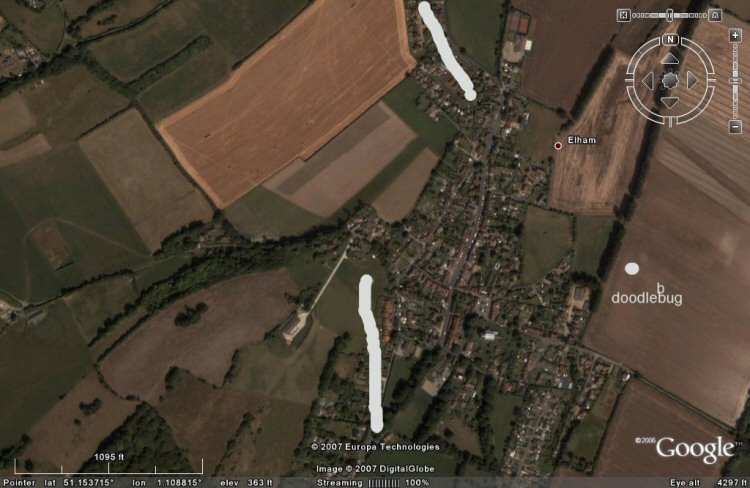
There is an article written by Bill Watson mentioning the bombing aimed at Park Gate which was used by Anthony Eden. That was a stick of bombs which fell from the field (now bungalows) beside the Gore and along behind Pegdens. Legend had it that at one of the bungalows there was a crater in the back garden and a small hole in the front and the bomb was assumed to have dropped in the front garden and skidded on the soft chalk under the bungalow to explode in the back garden.
There was a separate stick of bombs dropped on another occasion which started on the Kennel bank and ended in the road at the end of the village where the Back Row and main road meet, opposite Doctor Hunters (as was then). One bomb hit the kennels and killed some of the hounds while the rest of the pack rushed through the village. The last bomb brought down the electric and broke the water main which supplied the village and left a little hole in the road perhaps 6 feet across and 4 deep.
I well remember that incident as we were then in Briar Bank and my parents were washing up after Sunday lunch. The first thing we heard was the bombs whistling over us and my father shouting at us to lie down, then the aircraft rumbled over then the bangs. Funny how those incidents happen in slow motion, those were all in 1940.
Another incident was when Messerschmitt cannon shells hit the bungalow (Briar Bank) one Sunday morning at breakfast and a cannon shell exploded among the cabbages planted there making instant shredded cabbage. We were extremely lucky as one exploded beside the living room window and one just beneath it while we all sat round the table.
D Day and Other Memories:
The worst incident for Elham occurred in March 1945, when at 2 minutes to 7 one morning, a doodlebug exploded close to Water Farm and damaged every house in the village. My mother had just come into our bedroom which directly faced the blast, to wake us for school. There was a tremendous flash, then a big shock and bang, then a small pause and then the sound of glass falling into the road all down the street.
A German Bomber came down into the woods behind the Palm Tree pub. 1943/44.
A Hurricane crashed into the corn field behind the Brick Fields, Elham. The plane immediately caught fire with the pilot trapped inside.
A Halifax Bomber came down near Mock Beggar Farm.
Worlds Wonder was the name of the dog leg bridge which carried the Canterbury road across the railway and the Nailbourne. Earlier in the War a stick of bombs was dropped across that, none of which exploded. I think some are still there as rumour had it that as fast as the Army tried to dig them out so they sank further into the soft chalk. Also they had sand in their fuses as they had been sabotaged by the people who made them. I guess this was a morale boosting rumour, of which there were many in those days.
There was an army camp on the green for Canadian commandos.
The whole area around the village was used as a training ground prior to D Day. Columns of tanks taking 3-4 hours to pass.
Permanent War Damage Commission. These were to assess and put in hand, repairs to damage caused by the war, in particular much damage to farmers fences, hedges and crops caused by army manoeuvres.
We played with lots of ammunition of all sorts but mainly blanks, Briar Bank became home for a lot of bullets, around 300 in all to get rid of. Some buried in the garden. Soldiers used to give Peter and the Elham kids bullets to play with.
We once smoked the house out whilst playing with a smoke bomb.
We also played with shells and smoke bombs. We removed the fins and stuck the device in the fire. We also covered the holes and they would shoot up into the air with smoke coming out of the bottom.
Some live rounds also 303, 9mm and 20mm shells were placed in a slit trench dug by the army in Collards Wood. We set them off whilst we retired to an adjacent slit trench for cover.
One kid was killed at Jacques Court area. He was playing with a mortar bomb. 2 other children were seriously injured in 1943.
We collected empty 4 gallon cans which were thrown in the hedge at Collection Drops. Small quantities of petrol could be drained from most discarded cans and we collected about two gallons in this manner. Unfortunately when two lads carelessly lit a cigarette nearby the petrol flared up and some kids were badly burnt.
We watched the army laying mines in the fields opposite Standard Hill Farm. Kids took some before the army had placed the fuses in them and burnt them in the little wood opposite.
We used to play with cannon shells from crashed aircraft. We carefully removed the detonators, placed the shells on the road with a tile on top, then threw stones at them.
(It should be noted that these recollections are for interest only and neither Peter or this website recommend any of the above actions today)
George Parker owned Henbury Manor, Standard Hill Farm, Rakeshole and Ladwood. Peter worked there as a Farm Labourer and Beater.
Manor House, Elham was owned by Professor Parkinson Parkinson's Law "work expands so as to fill the time available for its completion."
Empire Day Air Display at Hawkinge Peter's father ferried the children to Hawkinge on his bicycle. Peter became interested in airplanes and later joined he RAF.
1949 Silver City at Lympne Airport using Bristol Freighters to ferry cars between there and Le Touquet. Flown by ex night fighter pilots who flew in formation while returning three aircraft to Lympne one evening.
Peter was in the Met Office working in the long huts at Lympne Airport. Officer in charge worked 9-5. Peter covered 3 x 8 hour shifts doing the meteorological observations and plotting charts. Helium balloons used to obtain upper air wind speeds and directions.
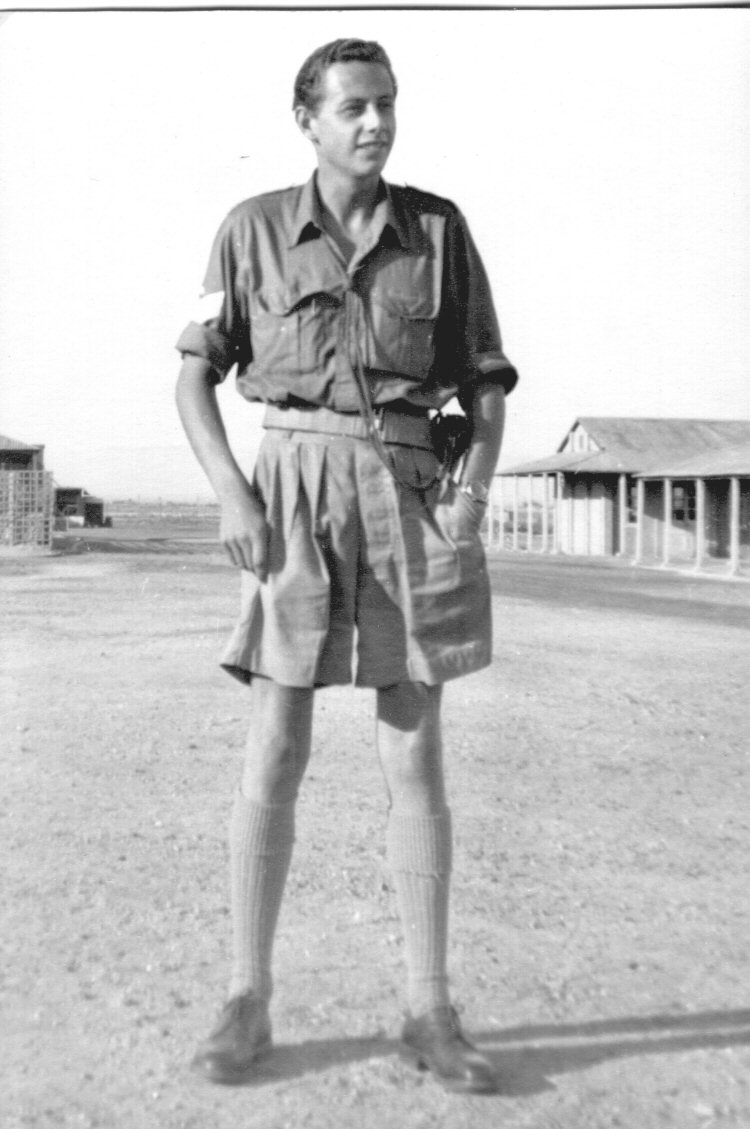
Peter Verney - RAF Guard Commander
Peter recalls "My RAF service luckily for me was in the'50's. I have done articles for a couple of websites, and if you have the patience possibly this one is the easiest to read. After our tour in Egypt we did one on another Meteor squadron at Wattisham, Suffolk and I finished my 8 year engagement on the staff of the Air Electronics School.,
Last updated 22/02/2014